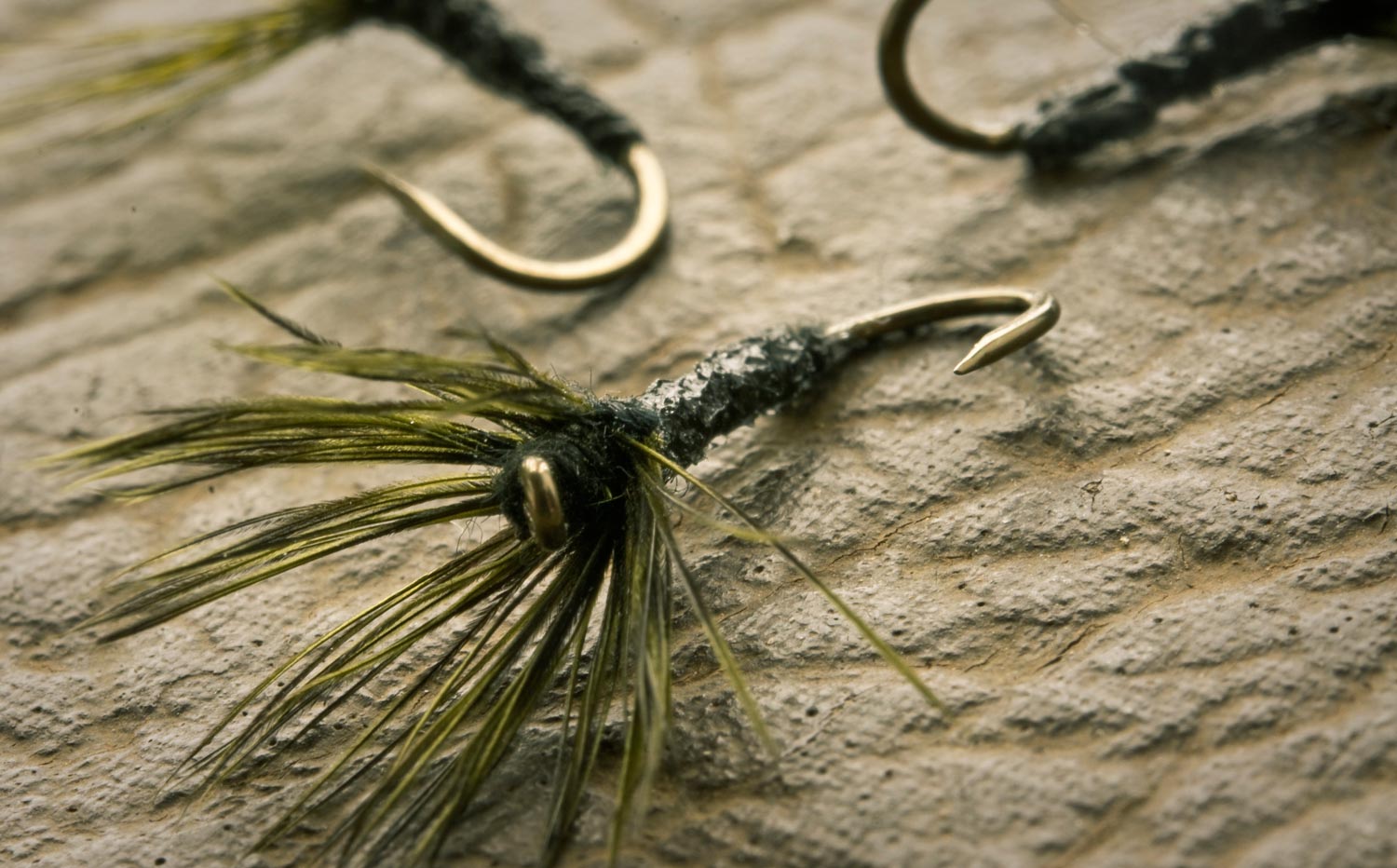By Daniel Galhardo
I initially got interested in fly-fishing because of flies and fly-tying.
The idea of creating a lure using feathers and thread was very appealing to me. Before I ever got my first fly rod I probably tied well over 100 flies. Of course, I got indoctrinated in the western fly-tying school, that of trying to imitate, at least somewhat closely, the insects that lived in the waters I fished. Then, I discovered tenkara. When I first discovered the method I saw in it just the idea of using a rod, line and fly. For my first year of tenkara fishing I continued using the western flies I had learned to tie: parachute adams, elk-hair caddis and some cool mayfly nymph imitations. And then I started learning tenkara from the people that had been doing it for decades in Japan, and I started paying closer attention to their flies.
Tenkara flies opened up a brand new world for me.
Sure, tenkara flies, called kebari in Japanese, were still supposed to fool fish by somehow looking like the insects those fish ate. While not all tenkara flies look the same, the most characteristic tenkara flies are the so-called sakasa kebari, or “reverse-hackle fly”. To a western fly angler they will look more like soft-hackles but with the hackle facing away from the bend of the hook, reversed. This reverse hackle style is very popular and has become my preferred style fly to use. With it, when I’m fishing in moving water the fly will always retain some profile to it rather than becoming a sliver and “disappearing”. I can also impart motion onto the fly, with a light pulsating of my rod, the fly will open and close and look very buggy.
Just like I got into fly-fishing because of flies and fly-tying, I can say that the tenkara flies and what they represent certainly had some impact on my interest in tenkara too. Tenkara flies show us the different approach of suggesting bugs rather than trying to imitate them. They also bring with them the philosophy of using any “one fly” (not changing flies nearly as much as we do in western fly-fishing), and the idea of tying the simplest fly you can get away with. How I wish I had known about tenkara flies when I started learning how to tie flies (my first several hundred flies I tied by hand, without the use of a vise.
Tenkara flies show us how simple fly-tying can be.
Here are two videos I think people should watch to learn about tenkara fly-tying
Mr. Amano, one of the most famous tenkara anglers in Japan, has always tied his flies without the use of a vise, just holding the hook and materials in his hands. Here’s how he does that:
When renowned tenkara angler, Dr. Hisao Ishigaki, came to give a demonstration at the Catskills Fly-fishing Center and Museum in 2009, he showed the fly that he uses and how he tied it. The only materials were black sewing thread, and cheap hackle. After he tied the fly, in about 50 seconds, someone asked him what other flies he would be showing. To which he responded, “This is it. This is the only fly I have used in about 10 years.” Here’s how to tie the fly that Dr. Ishigaki has successfully used to lure trout in Japan, as well as many streams in the US on his almost-yearly visits:
How to tie the Ishigaki kebari
On December 2nd we’ll start releasing a series of tenkara fly-tying videos that are currently in production. We’ll have a video coming up every week to show you how different people tie their own tenkara flies. www.tenkarausa.com
Daniel Galhardo Gink & Gasoline www.ginkandgasoline.com hookups@ginkandgasoline.com Sign Up For Our Weekly Newsletter!


What are the kebari in the photo tied with? The body material looks really interesting.
whatisthebest sewing thread touseto tie tenkara nylon or cotton